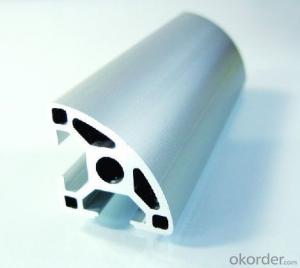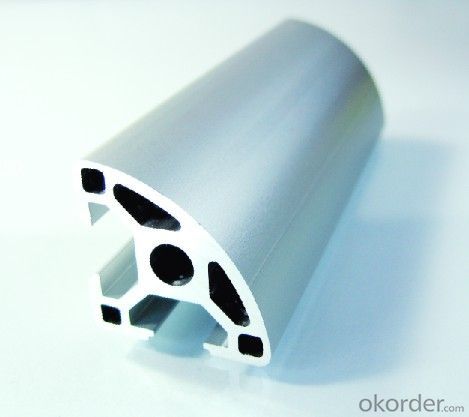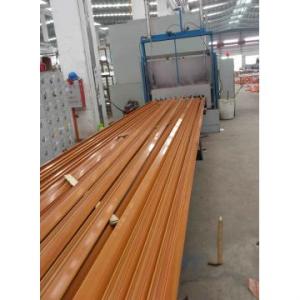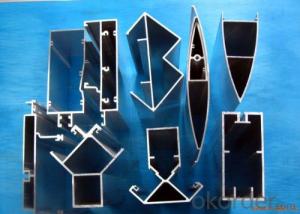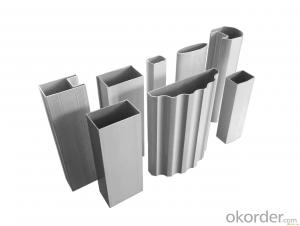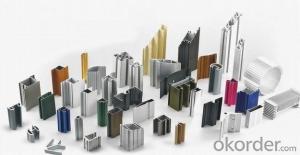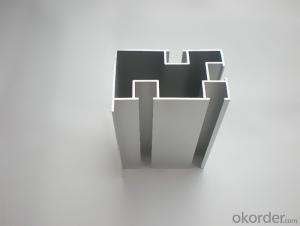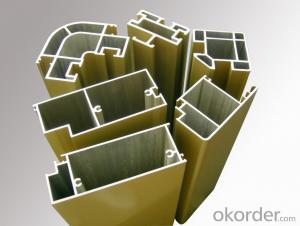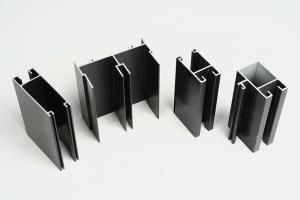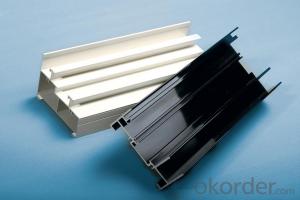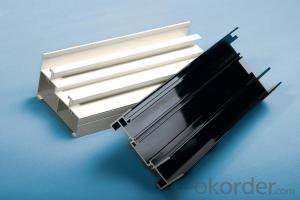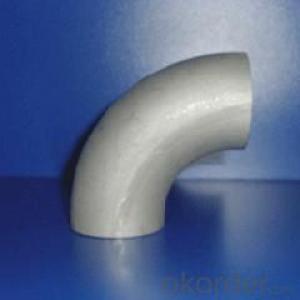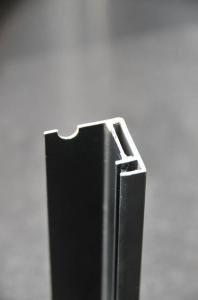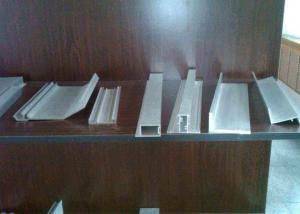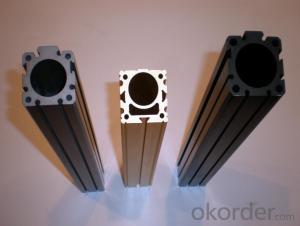80 20 Aluminum Extrusion Profiles Made in China Alloy 6 Series
- Loading Port:
- Shanghai
- Payment Terms:
- TT OR LC
- Min Order Qty:
- 1 m.t.
- Supply Capability:
- 1000 m.t./month
OKorder Service Pledge
OKorder Financial Service
You Might Also Like
Specification
1. Specification of Aluminum Profiles Made in China Alloy 6 Series
Alloy | State | Tensile Strength δbMpa | Non-proportional Stretching Stress(δp0.2Mpa) | Stretching rate (δ%) | Pattern Thickness (mm) | HV | HW |
No Less Than | |||||||
6061 | T4/T6 | 180/265 | 110/245 | 16/8 | - | - | - |
6063 | T5/T6 | 160/205 | 110/180 | 8/8 | 0.8/- | 58/- | 8/- |
6063A | T5/T6 | 200,190/230,220 | 160,150/190,180 | 5,5/5,4 | 0.8,0.8/-,- | 65,65/-,- | 10,10/-,- |
2. Application of Aluminum Profiles Made in China Alloy 6 Series
wall cladding, ceilings, bathrooms, kitchens and balconies, shutters, doors,windows…
3. Feature of Aluminum Profiles Made in China Alloy 6 Series
Surface Quality :
Be free from Oil Stain, Dent, Inclusion, Scratches, Stain, Oxide Decoration, Breaks, Corrosion, Roll Marks, Dirt Streaks and other defect which will interfere with use,
Mochenical Property:
Chemical Composite and Mechanical Property
4. Certificate:
SGS and ROHS(if client request, paid by client), MTC(plant provided), Certificate of Origin(FORM A, FORM E, CO), Bureau Veritas and SGS (if client request, paid by client), CIQS certificate
5. Image of Aluminum Profiles Made in China Alloy 6 Series

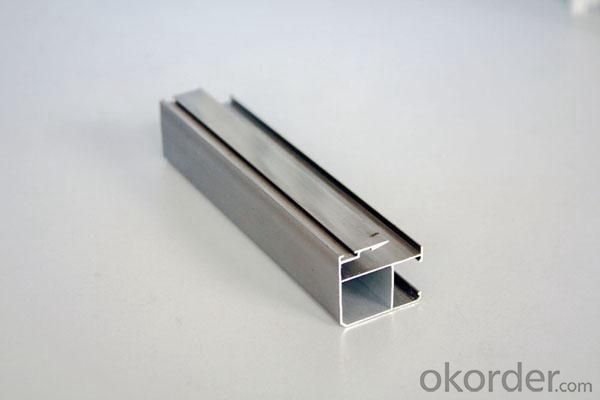
6. Package and shipping of Aluminum Profiles Made in China Alloy 6 Series
First, plastic cloth with drying agent inside; Second, Pearl Wool; Third, wooden cases with dry agent, fumigation wooden pallets, aluminum surface could cover blue PVC film
7. FAQ
Question 1: What is your MOQ?
We accept one ton per type for an order. But the detail we could negotiate.
Question 2: What is your normal terms of payment?
We always trade with you by T/T. But we also accept the L/C as you require.
Question 3: How many kinds of the surface treatment we can choose?
You could choose different color of powder coated. Anodized of black. matte silver, nature, champagne, bronze color. Mill finished. Wooden finished and printed.etc.
Question 4: Can you supply OEM services?
We offer OEM services for 17 years.
Question 5: How many days for opening the mould?
Normally about 10 days.According to the difficulty of your drawing.
Question 6: Can i choose the package what i want?
Yes, of course. We offer various kinds of package.e.g.PE foam. Shrink film. Wrapping paper.
But we would give you professional suggestion of package.
- Q: Aluminum blackening formula
- Anodic oxidation of aluminum is aluminum or Aluminum Alloy anode to lead as cathode in sulfuric acid, oxalic acid, chromic acid and aqueous solution electrolysis, so that the surface oxide film. The anodic oxidation process is most widely used. Aluminum and Aluminum Alloy sulfuric acid anodizing oxidation film has high adsorption capacity, easy sealing alone or with colored more to improve the corrosion resistance of anodic oxide film thickness and appearance. The process is generally Aluminum Alloy sulfuric acid anodizing electrolyte has the advantages of simple operation, stable, cost is not high, the process is mature, but in sulfuric acid anodized process often unavoidable failure occurred, influence of oxide film quality. The following detailed analysis about the failure reasons, then give some preventive measures for your reference:Common faults and analysisAluminum Alloy products by sulfuric acid anodic oxidation, partial oxidation without touch, showing visible black spots or stripes, film drums or holes. The failure phenomenon of tumor is rare but has occurred.Dr. al website has detailed knowledge
- Q: Hangzhou aluminum how much money one meter, where can wholesale?
- I want to know whether you know the material or notNobody asked how much money one meter of aluminumThe aluminum sections are calculated in units of tons or kilogramsBuild your own cost - check it outI used to check it out thereIt's a big help for me. You might as well try
- Q: Household aluminum profiles, which brand of cost-effective? Recommend!
- Cost performance is better, in our Nanshan factory is called a good fight,
- Q: How do you ensure proper alignment and accuracy when using aluminum profiles?
- To ensure proper alignment and accuracy when using aluminum profiles, several steps can be followed. Firstly, it is crucial to use high-quality aluminum profiles that are manufactured with precision. This ensures that the profiles are straight and have consistent dimensions. Secondly, before assembling the profiles, it is essential to carefully measure and mark the desired positions for joints, holes, or connections. Accurate measurements and markings help in aligning the profiles correctly. Thirdly, using appropriate tools like corner clamps or angle measuring tools can aid in aligning the profiles accurately at the desired angles. These tools help in holding the profiles securely in place during the assembly process. Additionally, using leveling or straight edges can help in ensuring that the profiles are aligned correctly in terms of height or flatness. Regularly checking the alignment during the assembly process and making necessary adjustments is also crucial. Finally, it is essential to follow the manufacturer's guidelines and recommendations for assembly techniques, fasteners, and accessories. Adhering to these instructions ensures that the profiles are accurately aligned and securely fastened, resulting in proper alignment and accuracy.
- Q: Can aluminum profiles be used in transportation and logistics applications?
- Yes, aluminum profiles are commonly used in transportation and logistics applications. Aluminum profiles are lightweight yet strong, making them an ideal choice for various components in the transportation and logistics industry. In the automotive sector, aluminum profiles are used in the manufacturing of car frames, chassis, and body panels. Their lightweight nature helps reduce the overall weight of the vehicle, resulting in improved fuel efficiency and lower emissions. Additionally, aluminum profiles offer excellent corrosion resistance, ensuring the longevity of the vehicle in harsh environmental conditions. In the aerospace industry, aluminum profiles are extensively used in the construction of aircraft structures, such as wings, fuselage, and landing gear. The high strength-to-weight ratio of aluminum profiles allows for increased payload capacity and fuel efficiency. Moreover, aluminum profiles can withstand extreme temperature variations and have good electrical conductivity, making them suitable for various aerospace applications. In the logistics sector, aluminum profiles are used for constructing cargo containers, pallets, and storage racks. The lightweight nature of aluminum profiles facilitates easy handling and transportation of goods. Additionally, aluminum profiles offer high resistance to rust and corrosion, ensuring the durability of logistics equipment even in humid or corrosive environments. Furthermore, aluminum profiles can be easily customized and fabricated to meet specific design requirements in transportation and logistics applications. They can be extruded into various shapes and sizes, allowing for versatility in design and functionality. Moreover, aluminum profiles can be joined using various methods like welding or fastening, providing flexibility in assembly and maintenance. In conclusion, aluminum profiles are indeed suitable for transportation and logistics applications due to their lightweight, strength, corrosion resistance, and versatility. They offer numerous benefits such as improved fuel efficiency, increased payload capacity, and durability in harsh environments. Thus, aluminum profiles are widely used in automotive, aerospace, and logistics industries for various components, contributing to the efficiency and reliability of transportation and logistics systems.
- Q: What are the different surface patterns or textures available for aluminum profiles?
- Aluminum profiles come in various surface patterns and textures, each offering unique qualities both aesthetically and functionally. Some of the most commonly used options are as follows: 1. Sleek and Polished: The smooth surface finish is the most basic and widely used. It is achieved by grinding and polishing the aluminum surface, resulting in a sleek and polished appearance. 2. Linear Texture: Brushed aluminum profiles have a linear texture that is created by brushing the surface with an abrasive material. This gives the metal a distinctive grain and a slightly matte look. 3. Corrosion-Resistant: Anodized profiles undergo an electrochemical process that enhances the natural oxide layer on the aluminum surface. This produces a durable and corrosion-resistant finish with a wide range of color options. 4. Decorative and Durable: Powder-coated profiles involve applying a dry powder to the aluminum surface, followed by heat curing. This creates a hard and decorative finish that can be customized with various colors and textures. 5. Enhanced Grip and Friction: Textured profiles feature patterned surfaces that add visual interest and offer improved grip or friction. The patterns can range from subtle to more pronounced, depending on the desired effect. 6. Wood-Like Appearance: Wood grain finishes are achieved through sublimation, where a high-resolution image of wood grain is transferred onto the aluminum surface. This allows for the appearance of wood without the need for maintenance. 7. Raised or Recessed Patterns: Embossed profiles have raised or recessed patterns created through mechanical or hydraulic processes. These patterns can serve both decorative and functional purposes, providing enhanced grip or structural strength. 8. Slip-Resistant: Diamond plate is a type of textured finish that features a raised diamond pattern on the surface. It is commonly used in industrial or high-traffic applications for its slip-resistant properties. The choice of surface pattern or texture for aluminum profiles depends on the specific application, desired aesthetic, and functional requirements. Manufacturers usually offer a range of options to cater to different needs and preferences.
- Q: Features of aluminum profiles
- Thermal conductivityThe thermal conductivity of aluminum alloy is about 50-60% of copper, which is beneficial to the manufacture of heat exchangers, evaporators, heating appliances, cooking utensils, and the cylinder head and radiator of automobiles.FerromagnetismAluminum is non ferromagnetic, which is an important feature of the electrical and electronic industries. Aluminum can not be spontaneous combustion, which is involved in loading and unloading or exposure to flammable and explosive materials is important.
- Q: How are aluminum profiles insulated?
- Aluminum profiles can be insulated in several ways to enhance their thermal performance. One common method is to incorporate a thermal break within the profile design. This involves the insertion of a non-conductive material, such as polyamide or polyurethane, between the inner and outer parts of the profile. This thermal break helps to minimize heat transfer between the interior and exterior of a building, thus improving energy efficiency. Another approach to insulating aluminum profiles is through the application of insulating materials, such as foam or rubber, on the interior or exterior surfaces of the profile. These materials act as barriers to reduce heat transfer and provide additional insulation. Furthermore, aluminum profiles can also be fitted with insulating gaskets or seals. These gaskets are typically made of rubber or other insulating materials and are positioned between the profile and the glazing, creating a thermal barrier and preventing heat loss or gain. Overall, the insulation of aluminum profiles involves incorporating thermal breaks, applying insulating materials, or using gaskets to minimize heat transfer and improve the energy efficiency of buildings.
- Q: Can aluminum profiles be used for shelving systems?
- Yes, aluminum profiles can be used for shelving systems. Aluminum profiles are known for their strength, durability, and versatility, making them an ideal choice for various applications including shelving systems. They can be easily customized and fabricated to fit specific dimensions and requirements, making it possible to create shelving systems of different sizes and designs. Additionally, aluminum is lightweight but sturdy, allowing for easy installation and maintenance. It is also resistant to rust and corrosion, making it suitable for both indoor and outdoor shelving systems. Overall, aluminum profiles offer a reliable and efficient solution for shelving systems.
- Q: What are the differences between the 6005 and 6003 aluminum profiles?Yangmingxg3
- 6003 of the magnesium content is higher than 6005, and the strengthening of magnesium to aluminum is remarkable. With the addition of 1% mg, the tensile strength increases by about 34MPa.
Send your message to us
80 20 Aluminum Extrusion Profiles Made in China Alloy 6 Series
- Loading Port:
- Shanghai
- Payment Terms:
- TT OR LC
- Min Order Qty:
- 1 m.t.
- Supply Capability:
- 1000 m.t./month
OKorder Service Pledge
OKorder Financial Service
Similar products
Hot products
Hot Searches
Related keywords
